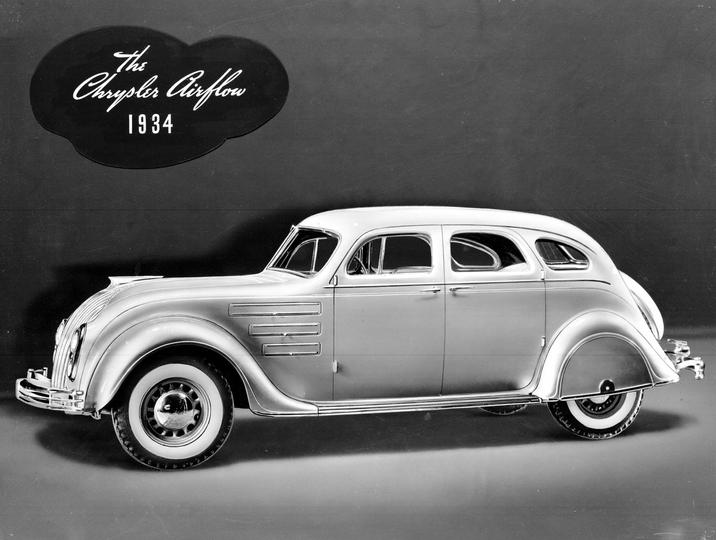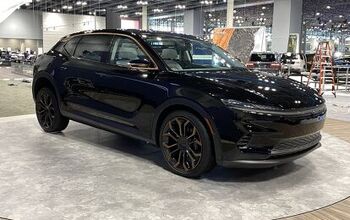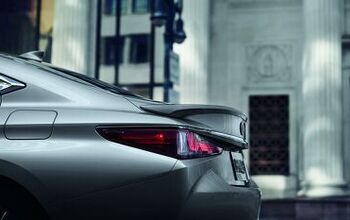Chrysler Going Electric By 2028, Airflow EV Introduced

Stellantis has announced plans to shift the Chrysler brand to an all-electric lineup by 2028, presumably because it doesn’t know what else to do with it anymore. Though, considering the make’s long and storied history, the change almost seems fitting.
When the French bought up Fiat Chrysler Automobiles from the Italians in 2021, the namesake brand had already been losing steam under the Germans. But they were adopting the company after years of mismanagement from Americans, who had taken the marque from being arguably the most luxurious and technologically advanced the United States had to one that had to be saved from bankruptcy by government intervention on more than one occasion. Suffice it to say, Chrysler has enjoyed some of the sweetest highs and pathetic lows imaginable. But it always seems to rise from the ashes thanks to some innovative decision that ultimately helps redefine the industry — which is why Stellantis is leading its own EV offensive by reviving the Airflow name.
Introduced by the Chrysler Corporation in 1934, the Airflow represented a technological leap forward for automotive manufacturing by being among the first vehicles to incorporate air resistance in its design. Sadly, the resulting bodywork left the model and its DeSoto twin less-than popular with motorists of the day. But the groundwork had been laid for the industry and the technology-focused nature that defined the Chrysler brand for the next few decades.
Obviously, that couldn’t last forever and the overriding corporate structure found itself hemorrhaging cash throughout the late 1970s. But new, easy to produce and compact designs began emerging (sometimes with motors on loan from Mitsubishi) to cater to the needs of the day. By the 1980s, the business has a rosier outlook and was introducing entirely new and very successful body styles via the Dodge Caravan and Plymouth Voyager minivans.
Since then, the manufacturing group has gone through numerous name changes and a host of foreign investors. Some years have been good, while others were exceptionally bad. But the one constant has been the dwindling market share of the standalone Chrysler brand. Its annual sales for the U.S. market went from 641,406 in 2006 (under Daimler-Chrysler) to just 110,285 in 2020 (under FCA). When PSA Group bought the company to form Stellantis, Chrysler was little more than a purveyor of luxury minivans and the classier alternative to Dodge’s Charger thrown in as part of the deal to get ahold of Jeep.
Leadership is now tapping the Chrysler name to spearhead electrification while it decides how to best modernize the rest of its properties. Frankly, I’m less than enthusiastic about Dodge abandoning V8 powertrains for turbocharged V6s and nearly cried when the venerable Caravan was discontinued in 2020. But transitioning Chrysler over to EVs hasn’t gotten my Mopar-embroidered panties in a twist, likely due to its already spartan lineup and prolonged history of rolling with the punches. Besides, if there was ever an automaker that needed some reinvention and deserved a second chance — it’s this one.
While the Airflow has not been confirmed for production, Chrysler CEO Christine Feuell indicated that the concept was a physical acknowledgment of what Stellantis has planned for the brand moving forward. The first official EV on the production docket is an (as of yet) unnamed crossover in 2025, with a planned all-electric minivan and at least one other vehicle taking the stage by 2028.
“When we sought to redefine and revitalize the Chrysler brand, we needed to make sure that we were creating differentiation within the Stellantis portfolio as well as compared to competition,” she told CNBC during a virtual interview held ahead of CES 2022. “We will be adding one new product per year once we launch our first new product … and expanding that lineup between then and 2028.”
“[Technology] is so important with what consumers are looking for in terms of that seamless connectivity and integrating their personal digital life with their mobile digital life,” Feuell continued. “[The goal is to make] that easy and intuitive with the ability to personalize every space within the vehicle regardless of whether it’s a driver or a passenger.”
That presumably means adopting all of the double-edged connectivity features other manufacturers are leaning into. As things currently stand, it’s actually harder for automakers to make money on EVs that lack exceptionally high price tags without sizable government-backed incentives. However, industry trends and government intervention are effectively forcing electrification at an inorganic pace. One solution to this conundrum — made easier by the digitization of automobiles — is to offer subscription-based features, services, and customization using the preeminently embedded internet. We gripe about the related privacy concerns and the potential for disgustingly predatory business tactics all the time. But there remains an opportunity for the industry to make money from it and companies cannot wait to see how their implementation plays out.
For better or worse, the Chrysler Airflow concept also has all the hallmarks of a modern connected EV. The interior is dominated by large screens encompassing the entirety of the dashboard, the grille lights up unnecessarily, and it uses the latest AI-supported software (STLA SmartCockpit) Stellantis has at its disposal.
Visually, the crossover is a conglomerate of the Chrysler Pacifica, Lincoln Corsair, and Tesla Model X — resulting in some handsome, but ultimately derivative, minimalism. We’re hoping the subsequent production model keeps the Airflow name while taking a few liberties with the concept’s bodywork. On the upside, Stellantis has said that both should boast all-electric ranges somewhere between 350 and 400 miles on a single charge.
But this will be a win only if the prospective model can undercut the typically lofty MSRPs associated with luxury EVs without sacrificing comfort or features. For now, leadership has only confirmed that it doesn’t want any of its electrified models straying far from the “sweet spot,” which CEO Feuell identified as between $35,000 and $60,000.
In the interim, we’ve heard plans that Chrysler will end production of the 300 sedan by the end of 2023 — leaving a massive hole in its already svelte lineup. The Airflow (or whatever name they end up using) is assumed to fill the void in the summer of 2024 after the Belvidere plant in Illinois has been retooled. Though this is speculative, with our having no way of determining how much of Stellantis’ $35.5 billion electric vehicle investment will be going toward the project.
[Images: Stellantis]

Consumer advocate tracking industry trends and regulations. Before joining TTAC, Matt spent a decade working for marketing and research firms based in NYC. Clients included several of the world’s largest automakers, global tire brands, and aftermarket part suppliers. Dissatisfied, he pivoted to writing about cars. Since then, he has become an ardent supporter of the right-to-repair movement, been interviewed about the automotive sector by national broadcasts, participated in a few amateur rallying events, and driven more rental cars than anyone ever should. Handy with a wrench, Matt grew up surrounded by Detroit auto workers and learned to drive by twelve. A contrarian, Matt claims to prefer understeer and motorcycles.
More by Matt Posky
Latest Car Reviews
Read moreLatest Product Reviews
Read moreRecent Comments
- Ajla IMO, something like this really should be naturally-aspirated.
- Kjhkjlhkjhkljh kljhjkhjklhkjh Unless they are solid state batteries you BAN THEM. I like EVs... but EVs like to burn ... for days
- Kjhkjlhkjhkljh kljhjkhjklhkjh uh .. it looks like a VW golf got the mumps
- Kjhkjlhkjhkljh kljhjkhjklhkjh I CANNOT WAIT FOR SOCIAL SECURITY TO GET GUTTED.. No i am really serious. I am insulated thanks to 24 years at Symantec then Broadcom .. tons of retirement cash. but all the blue hairs and low income trump voters are going to lose benefits and jobs and i get to laugh allllll dayyyyy long in about 2-3 years.. CANNOT WAIT, POPCORN READY.
- Kjhkjlhkjhkljh kljhjkhjklhkjh no. to many '''''americans'''' just want a CUV or SUV according to sales numbers








































Comments
Join the conversation
"if there was ever an automaker that needed some reinvention and deserved a second chance — it’s this one" Whoa, hold up a second - a blanket statement like this is going to need some justification. (Or at least a QOTD if we still did those which I suppose we don't and by we I mean you and by you I mean the collective you but not Soviet style collective)
What about an EV minivan? Chrysler is still close to owning the minivan space. Nobody has a mini EV van unless you count the Transit. The PHEV Pacifica is not great from the owners I know. If you want to be cute you can call it the minEVan.